A Large and Rare Double Sided Traveling Reliquary Case
A Large and Rare Double Sided Traveling Reliquary Case Revealing Two Oval Miniatures Painted in Oil and Four Oval Rock Crystal Windows Containing Religious ‘Reliquaries’ and ‘Ancient Relics’
The initials: ‘MRA’ representing ‘Mary’ and ‘IHS’ representing ‘Jesus’ engraved to either side of the case
Gilt Copper
Flemish
17th Century
SIZE: 8.5cm high, 6.2cm wide, 3cm deep - 3³⁄₈ ins high, 2³⁄₈ ins wide, 1¹⁄₈ ins deep
The initials: ‘MRA’ representing ‘Mary’ and ‘IHS’ representing ‘Jesus’ engraved to either side of the case
Gilt Copper
Flemish
17th Century
SIZE: 8.5cm high, 6.2cm wide, 3cm deep - 3³⁄₈ ins high, 2³⁄₈ ins wide, 1¹⁄₈ ins deep
A Large and Rare Double Sided Traveling Reliquary Case Revealing Two Oval Miniatures Painted in Oil and Four Oval Rock Crystal Windows Containing Religious ‘Reliquaries’ and ‘Ancient Relics’
The initials: ‘MRA’ representing ‘Mary’ and ‘IHS’ representing ‘Jesus’ engraved to either side of the case
Gilt Copper
Flemish
17th Century
SIZE: 8.5cm high, 6.2cm wide, 3cm deep - 3³⁄₈ ins high, 2³⁄₈ ins wide, 1¹⁄₈ ins deep
The initials: ‘MRA’ representing ‘Mary’ and ‘IHS’ representing ‘Jesus’ engraved to either side of the case
Gilt Copper
Flemish
17th Century
SIZE: 8.5cm high, 6.2cm wide, 3cm deep - 3³⁄₈ ins high, 2³⁄₈ ins wide, 1¹⁄₈ ins deep
Relics of the saints and martyrs are venerated in the Eastern and Oriental Orthodox and Roman Catholic church, as well as some Anglican churches. The use of reliquaries became an important part of Christian practices from at least the 4th century AD initially in the Eastern church which adopted the moving and dividing of the bodies of saints much earlier than the West, probably because the new capital of Constantinople, unlike Rome, lacked buried saints. Reliquaries provide a means of protecting and displaying relics which were often considered ‘more valuable than precious stones and more to be esteemed than gold’.
Reliquaries in the form of jewellery or ‘lockets’ housing tiny relics first appeared in the early 16th century. Designed with portability in mind, they were often acquired by the faithful on pilgrimages.
Reliquaries in the form of jewellery or ‘lockets’ housing tiny relics first appeared in the early 16th century. Designed with portability in mind, they were often acquired by the faithful on pilgrimages.
A Large and Rare Double Sided Traveling Reliquary Case
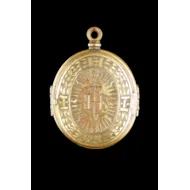
SOLD
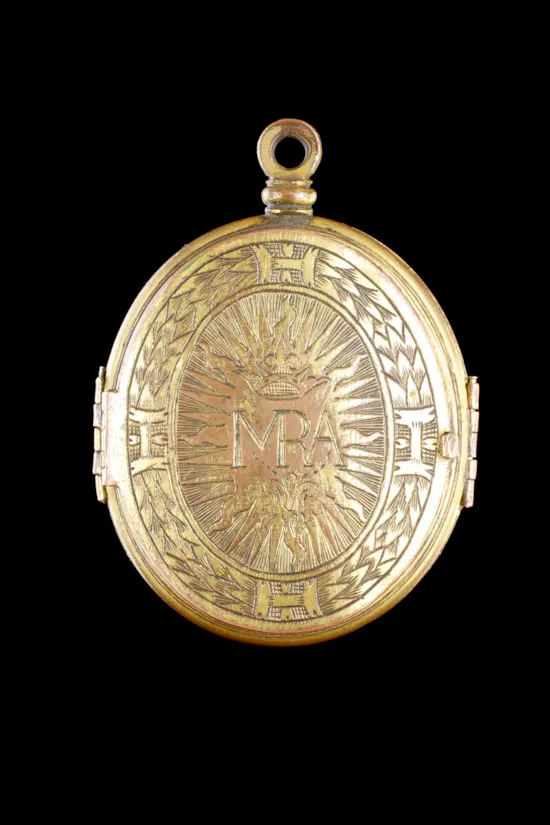
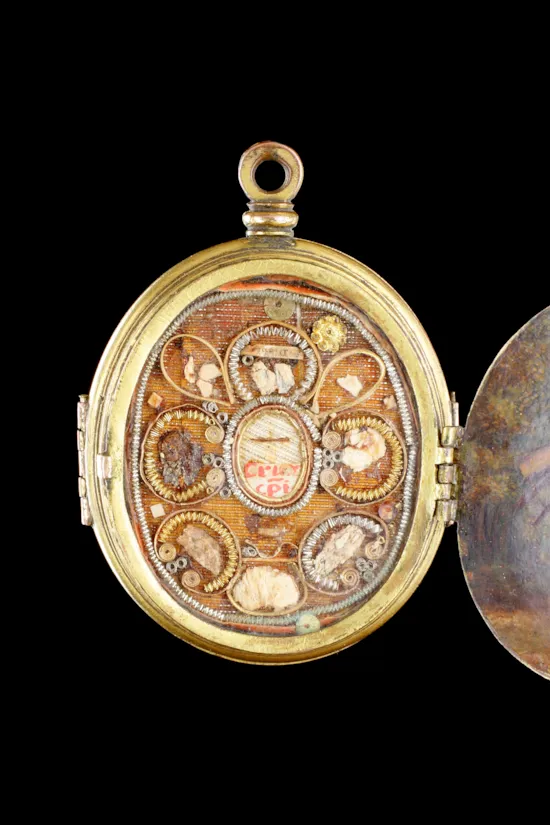
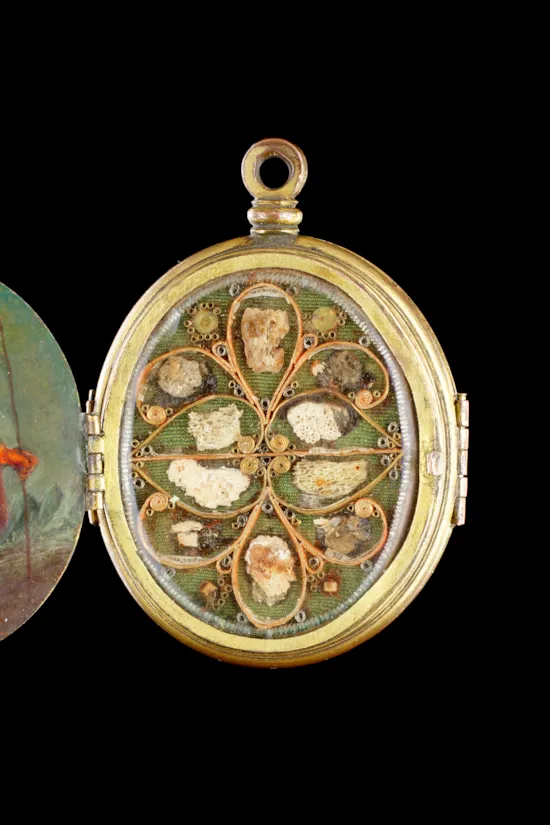
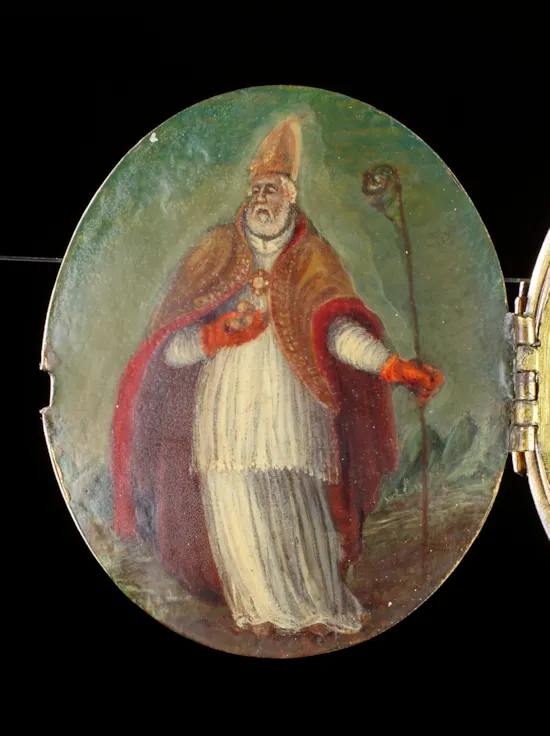
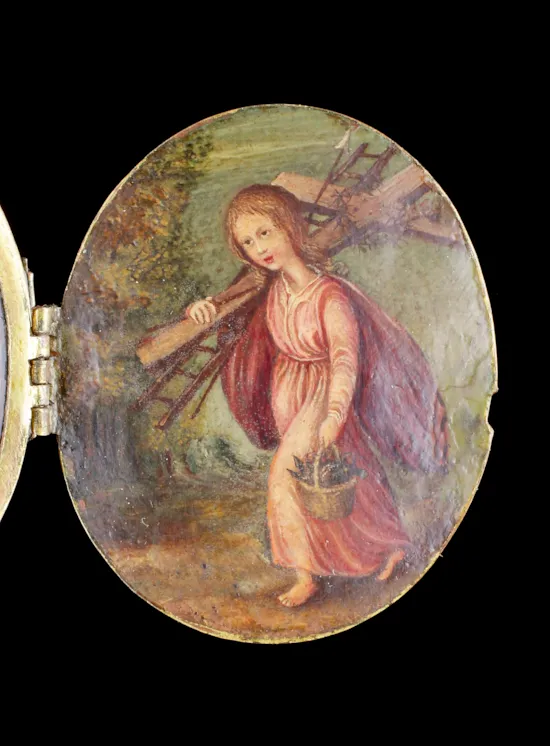
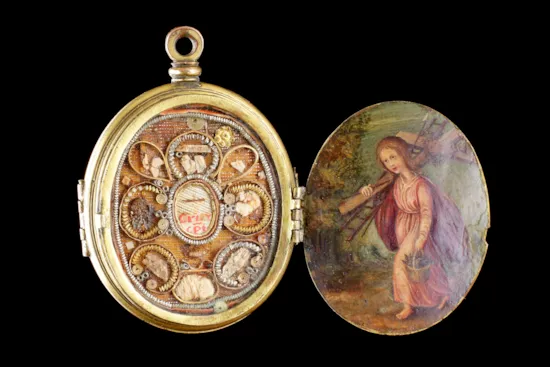
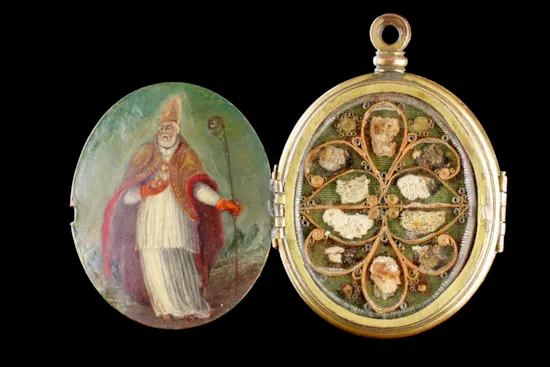
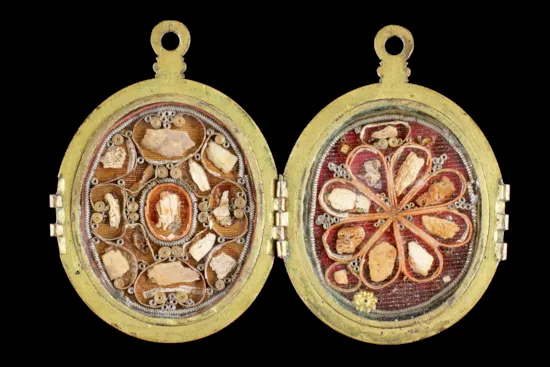
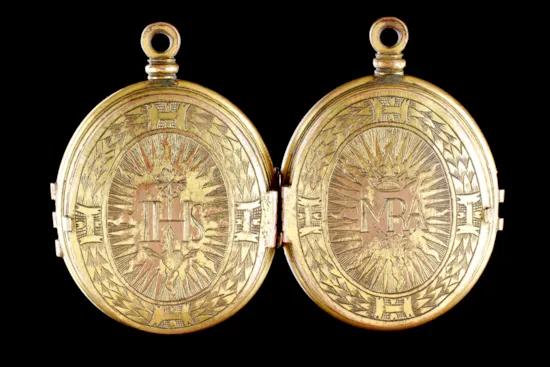
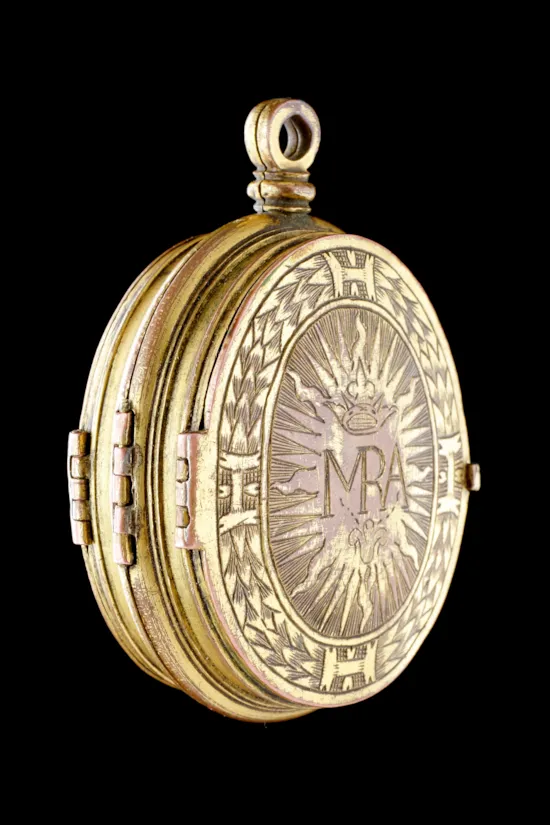
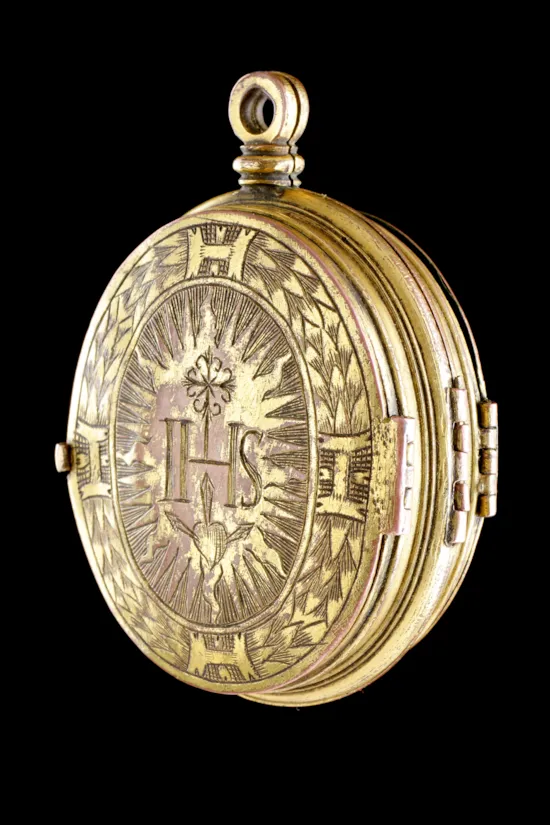











YOU MAY ALSO LIKE

